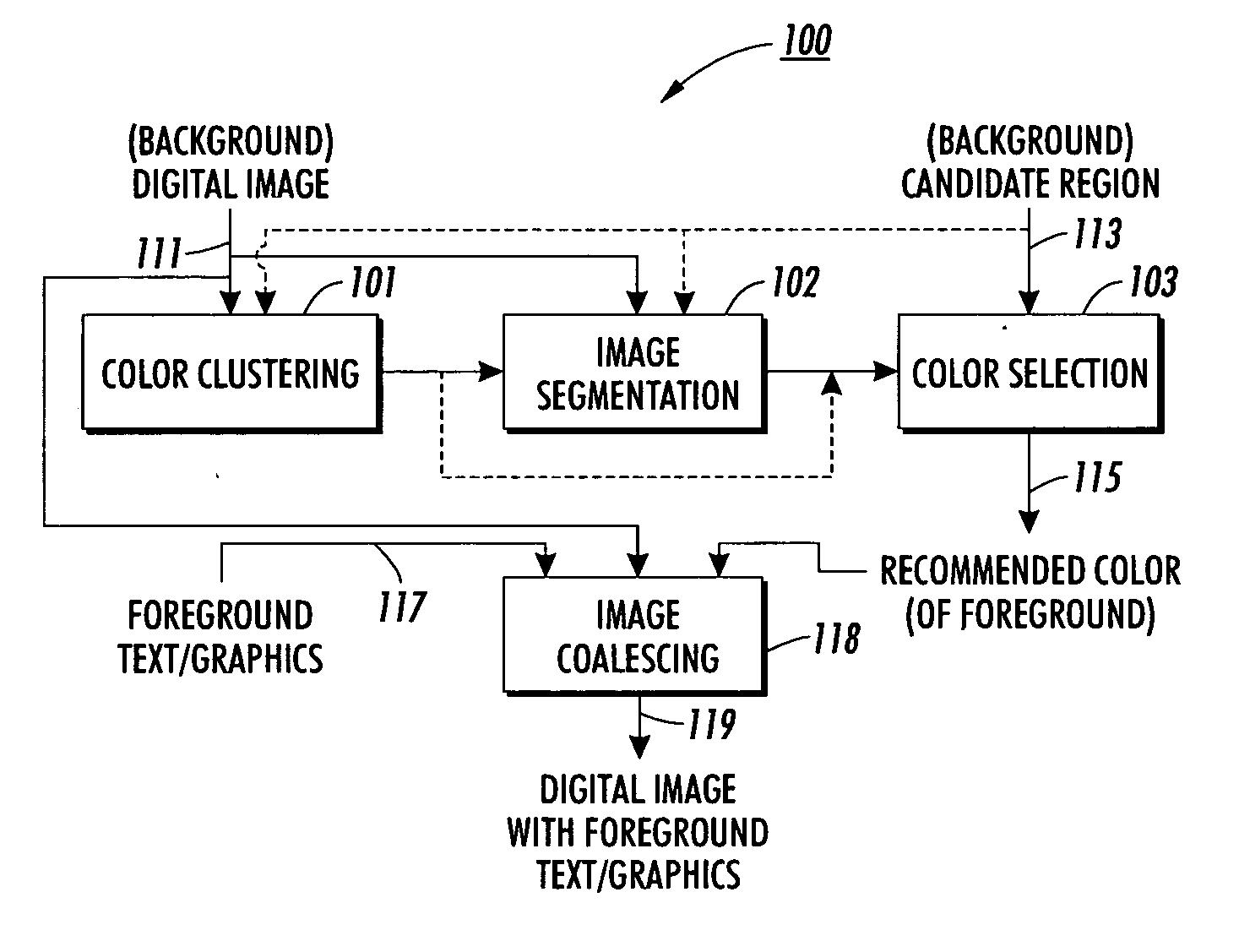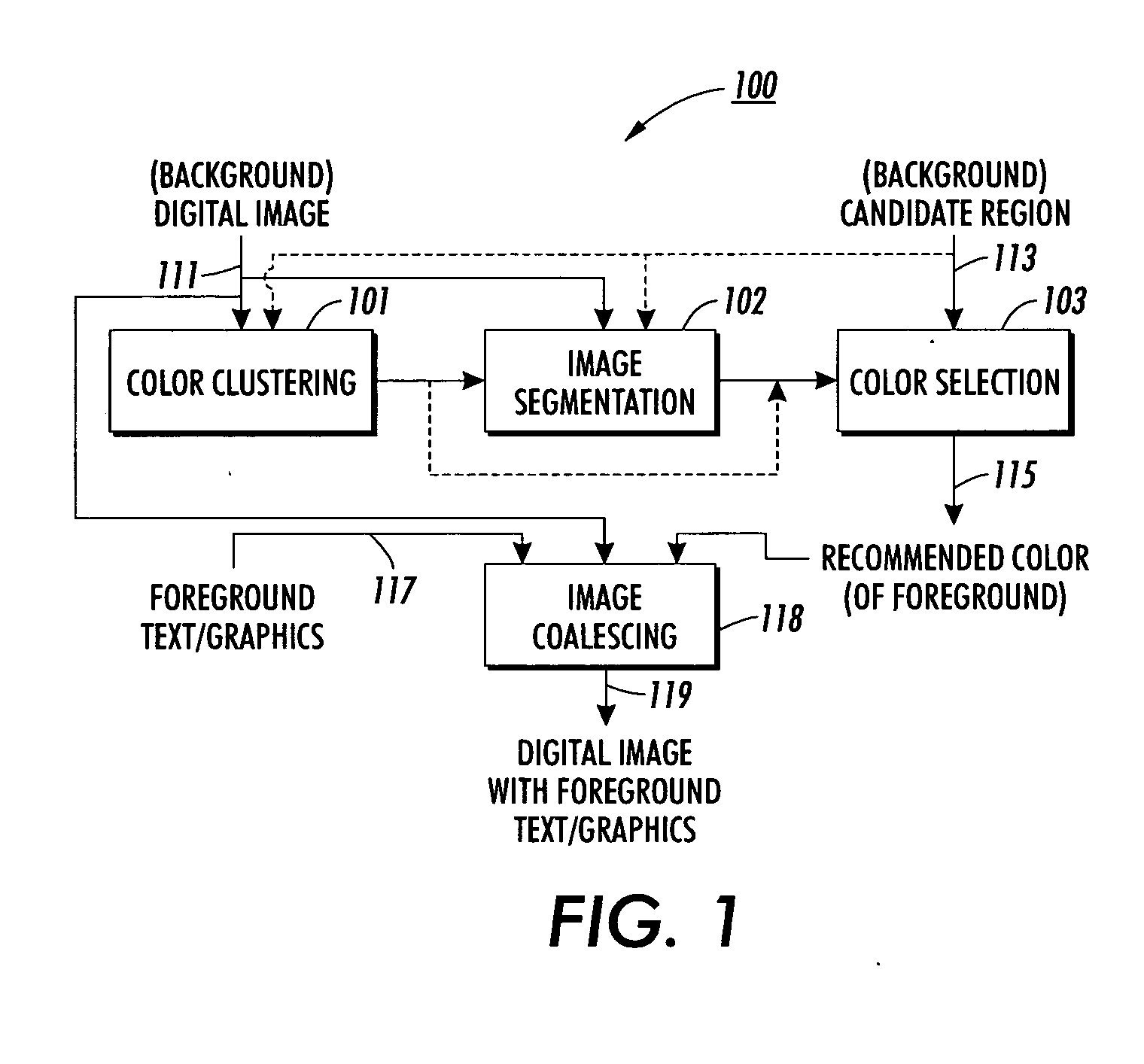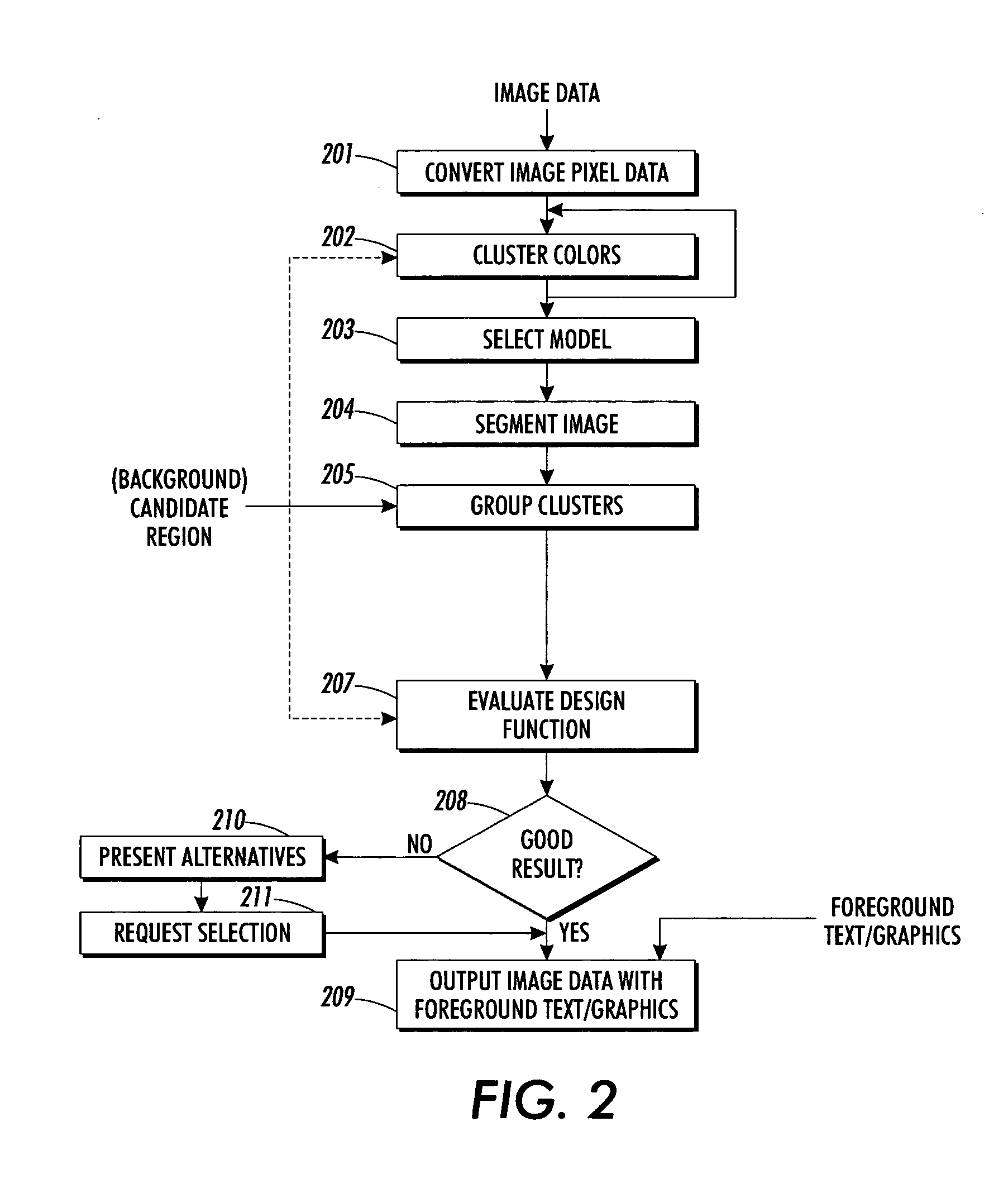Method and apparatus for automatically determining image foreground color
a technology of automatic determination and image foreground color, which is applied in the direction of static indicating devices, instruments, editing/combining figures or texts, etc., can solve the problems of difficult to read text and unsuitable colors, and achieve the effect of maximizing the legibility criterion, reducing the number of possible colors, and maximizing the legibility function
- Summary
- Abstract
- Description
- Claims
- Application Information
AI Technical Summary
Benefits of technology
Problems solved by technology
Method used
Image
Examples
first embodiment
[0054] A first embodiment for performing image segmentation is based on a normalized cut criterion. This method is described, for example, in J. Shi and J. Malik, “Normalized Cuts and Image Segmentation”, IEEE Transactions on Pattern Analysis and Machine Intelligence 22, 888-905 (2000), which is incorporated herein by reference. Further alternatives are region-growing, region-splitting, or energy-minimization methods. Additionally, other methods of image segmentation known in the art may be used as will be appreciated by those skilled in the art, some of which are disclosed in the following publications, which are all incorporated herein by reference: K. S. Fu and J. K. Mui, “A Survey On Image Segmentation”, Pattern Recognition, vol. 13, pp. 3-16, 1981; R. M. Haralick, “Image Segmentation Survey”, in Fundamentals in Computer Vision, O. D. Faugeras (ed.), pp. 209-224, Cambridge University Press, Cambridge, 1983; R. M. Haralick and L. G. Shapiro, “Survey—Image Segmentation Techniques”...
second embodiment
[0074] In a second embodiment for evaluating the design function at 207 according to one or more predetermined criteria, a color harmony criterion is evaluated. In this embodiment, a color harmony function is defined for recommending a foreground color with respect to one or more interference clusters and / or benign clusters. The color harmony function can have a form so as to fulfill a predetermined design principle such as: the distance to one of the benign clusters is small (repetition of elements); or a color harmony principle such as the color lies along a line in RGB space which joins the origin and the center of one of the interference clusters (i.e., monotonic color harmony); the color is nearly opposite in hue to a specific color cluster (e.g., a major cluster comprising a majority of the pixels), either interference or benign (complementary color harmony); the color's hue and the hue of other clusters divide the color wheel into equal increments (e.g., triadic and quadric c...
third embodiment
[0076] In a third embodiment for evaluating the design function at 207, a combination of color harmony and legibility criteria is used in a design method to recommend a color for a candidate region, for which a flow diagram is shown in FIG. 9. The design method involves initially selecting, at 901, a harmonious color set with respect to clustered colors of the background image using a color harmony function, as described in more detail above. Subsequently, the harmonious color set (i.e., a subset of the clustered colors) is tested using a legibility function at 902 from which one or more colors are selected for recommendation at 903.
[0077] In an example embodiment combining the evaluation of color harmony and legibility criteria, the harmonious color set may be selected (as shown in FIG. 9 at 901) by determining a subspace (set of colors) of the color space where a given color model (e.g., monotonic, triadic, etc.) is valid. In this way, a large number of colors can already be elimi...
PUM
 Login to View More
Login to View More Abstract
Description
Claims
Application Information
 Login to View More
Login to View More - R&D
- Intellectual Property
- Life Sciences
- Materials
- Tech Scout
- Unparalleled Data Quality
- Higher Quality Content
- 60% Fewer Hallucinations
Browse by: Latest US Patents, China's latest patents, Technical Efficacy Thesaurus, Application Domain, Technology Topic, Popular Technical Reports.
© 2025 PatSnap. All rights reserved.Legal|Privacy policy|Modern Slavery Act Transparency Statement|Sitemap|About US| Contact US: help@patsnap.com



